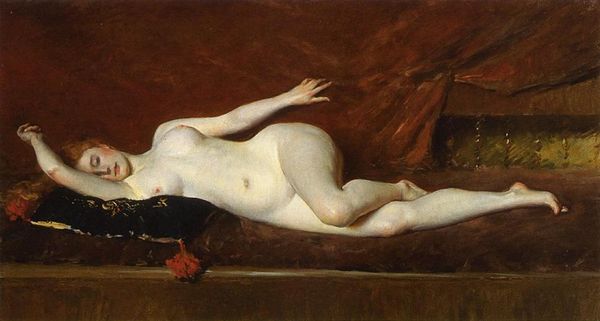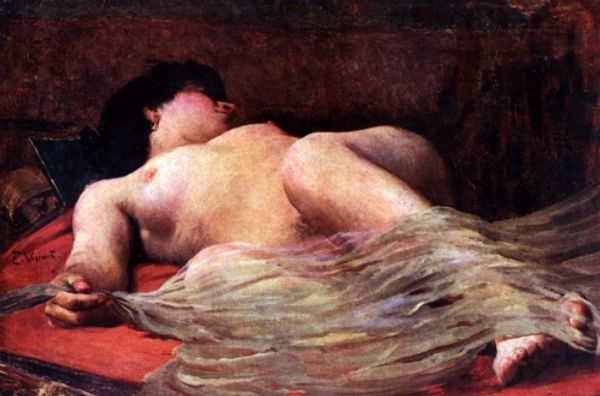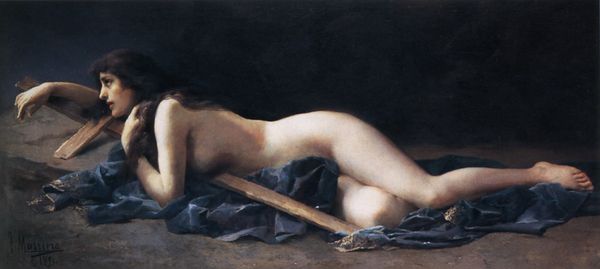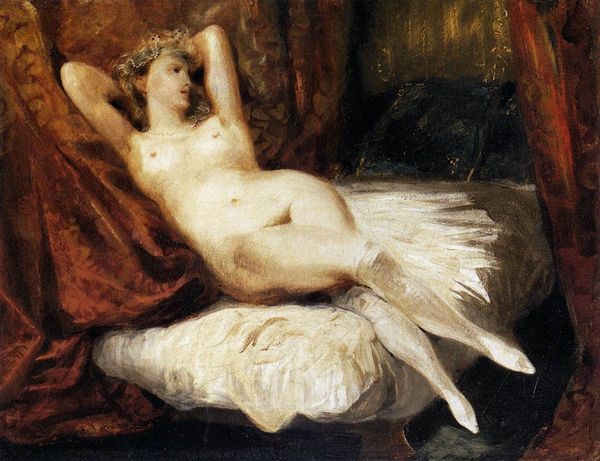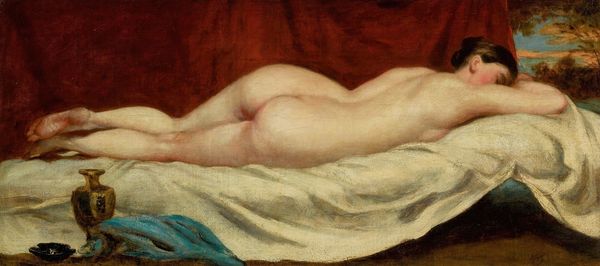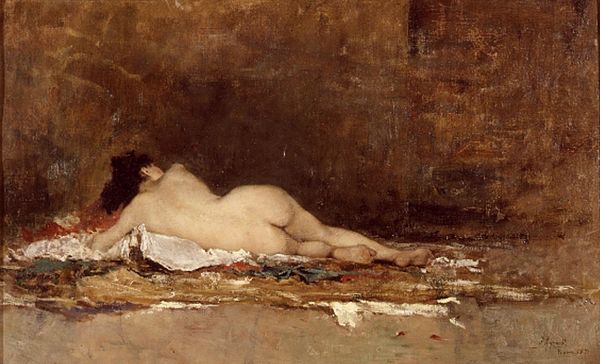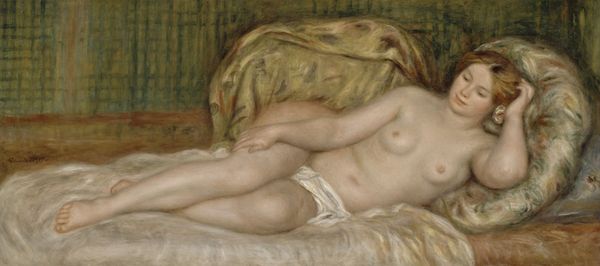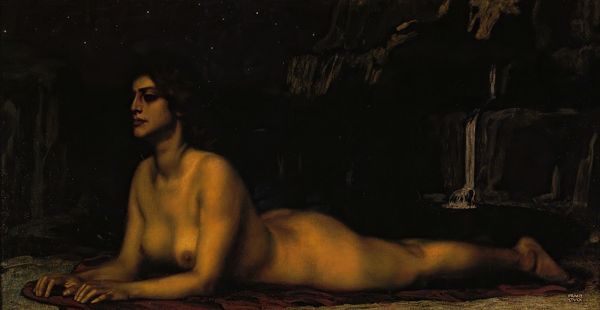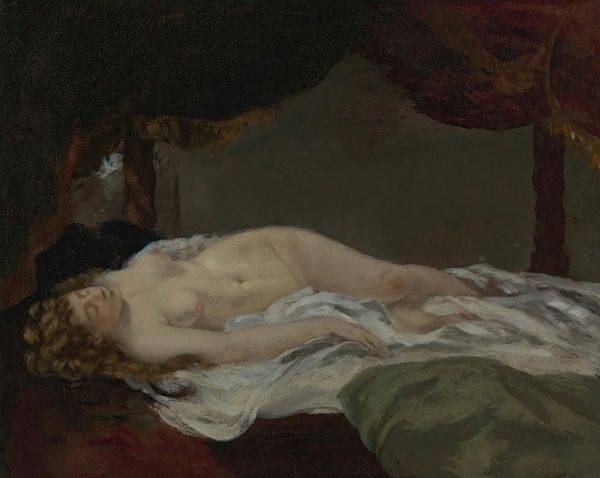
Copyright: Public domain
Editor: Here we have Carolus-Duran's oil painting, "Danae," created around 1900. There's a languid feel to the pose and a definite sensuality. What do you see in this piece, in terms of what it's trying to say or represent? Curator: Beyond the immediate impression of beauty, I see a potent symbol of reception and transformation. Danae, in mythology, receives Zeus as golden rain. The symbolism is rich – divine intervention, fertility, the impregnation of the mortal by the god. That golden rain is noticeably absent. Instead we are offered the aftermath or the expectancy of it. Editor: The expectancy is interesting. Is the darkness a metaphor for anything? Curator: The dark backdrop and the deep indigo fabric she reclines upon, I think, amplify the mystery and the unknown that comes with divine encounters. Consider the flower she delicately holds: a potential symbol of purity, or perhaps foreshadowing the blossoming that will come of this union. Are we seeing a passive recipient or an active participant in a sacred narrative? What do you think the lack of overt godly iconography implies? Editor: Maybe that the focus is meant to be more on the human experience of the divine? Less about Zeus, more about Danae? It’s as much about inner transformation as it is about the external event. Curator: Precisely. The power of symbols lies in their adaptability and layered meanings. Duran invites us to contemplate the enduring themes of mythology: fate, desire, and the profound intersection of the human and the divine. Editor: I hadn’t thought about it that deeply. Thanks for showing me the symbolic connections; it enriches my appreciation so much.
Comments
No comments
Be the first to comment and join the conversation on the ultimate creative platform.



